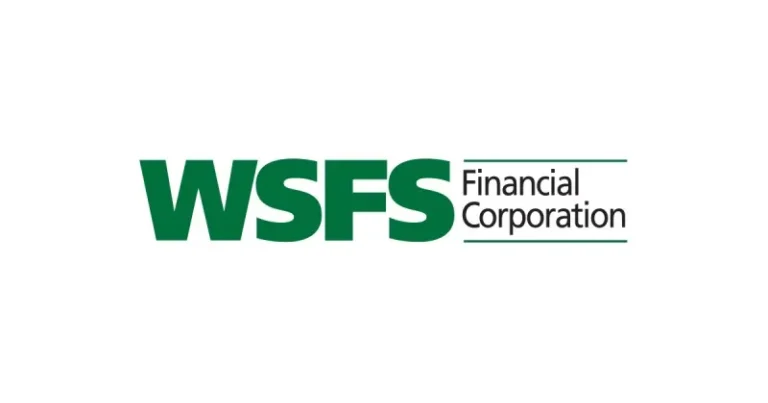
Western Asset Inflation-Linked Opportunities & Income Fund (WIW)
Notification of Sources of Distributions
Pursuant to Section 19(a) of the Investment Company Act of 1940
Introduction:
The Western Asset Inflation-Linked Opportunities & Income Fund (NYSE: WIW) has announced the estimated sources of its monthly distribution to be paid on December 31, 2024. This notice, made in accordance with Section 19(a) of the Investment Company Act of 1940, outlines the estimated breakdown of the distribution, which is a crucial update for shareholders who rely on these payments for their investment income.
Estimated Allocations for the December Monthly Distribution (as of November 30, 2024):
For the December 2024 distribution, the Fund’s estimated allocation per share is as follows:
- Distribution Per Share: $0.0605
- Net Investment Income: $0.0605 (100.00%)
- Net Realized Short-Term Capital Gains: $0.0000 (0.00%)
- Net Realized Long-Term Capital Gains: $0.0000 (0.00%)
- Return of Capital: $0.0000 (0.00%)
This distribution breakdown indicates that the entire amount of the distribution comes from the Fund’s net investment income, with no contribution from short-term or long-term capital gains or return of capital.
Cumulative Estimated Allocations for the Fiscal Year (as of November 30, 2024):
For the fiscal year-to-date, as of November 30, 2024, the cumulative distribution per share and the allocation of the distribution are as follows:
- Distribution Per Share: $0.7260
- Net Investment Income: $0.7260 (100.00%)
- Net Realized Short-Term Capital Gains: $0.0000 (0.00%)
- Net Realized Long-Term Capital Gains: $0.0000 (0.00%)
- Return of Capital: $0.0000 (0.00%)
For the year so far, the entire amount of distributions has come from net investment income, with no portion attributable to capital gains or return of capital.
Important Notice Regarding Distribution Sources:
Shareholders are cautioned against drawing conclusions about the Fund’s overall investment performance based solely on the amount of the distribution or the allocations made under the Fund’s managed distribution policy. WIW’s current distribution may exceed its income and net realized capital gains, meaning a portion of the distribution could be considered a return of capital.
It is important to note that a return of capital occurs when the Fund pays back some or all of the initial investment made by shareholders. Such distributions should not be mistaken for income or yield, as they do not reflect the performance of the Fund’s investments. The amounts and sources of the distribution provided here are estimates and are subject to change. The actual figures for tax reporting purposes will depend on the Fund’s final investment results for the year and could differ from the estimates provided.
Additionally, while return of capital distributions are not taxable at the time of payment, they do reduce the shareholder’s tax basis in the Fund’s shares. Therefore, shareholders should track their tax basis carefully to account for any changes due to such distributions.
For accurate tax reporting, the Fund will send Form 1099-DIV to shareholders for the calendar year. This form will provide detailed guidance on how to report the distributions for federal income tax purposes, based on the actual amounts and sources of the distributions WIW.

Fund Performance and Distribution Rate Information:
To give shareholders a clearer understanding of the Fund’s performance, several key metrics related to the Fund’s net asset value (NAV) and distributions are provided:
- Average Annual Total Return (5-year period ending November 30, 2024): 1.61%
- Annualized Distribution Rate (as of November 30, 2024): 7.43%
- Cumulative Total Return (from November 30, 2023, to November 30, 2024): 5.93%
- Cumulative Fiscal Year-To-Date Distribution Rate (as of November 30, 2024): 7.43%
Explanation of Performance and Distribution Metrics:
- Average Annual Total Return in relation to NAV refers to the compounded average of the Annual NAV Total Returns for the Fund over the past five years, ending November 30, 2024. The NAV Total Return represents the percentage change in the Fund’s net asset value over a year, assuming that distributions were reinvested into the Fund.
- Annualized Distribution Rate is calculated by annualizing the distribution rate of the current fiscal period as a percentage of the Fund’s NAV as of November 30, 2024. This rate helps investors understand the expected yield based on the Fund’s current NAV and distribution levels.
- Cumulative Total Return reflects the percentage change in the Fund’s NAV from November 30, 2023, to November 30, 2024, assuming reinvestment of distributions. This is a useful metric for understanding the overall performance of the Fund over the one-year period.
- Cumulative Fiscal Year-To-Date Distribution Rate shows the dollar value of the Fund’s distributions for the period from November 30, 2023, to November 30, 2024, as a percentage of the Fund’s NAV as of November 30, 2024.

Fund’s Managed Distribution Policy:
The Fund operates under a managed distribution policy designed to provide regular monthly distributions to shareholders. This policy seeks to deliver the Fund’s long-term total return potential through fixed-rate monthly distributions. However, these distributions may be paid out of various sources, including net investment income, realized capital gains, or even a return of capital, or a combination thereof.
It’s important for shareholders to understand that if the Fund’s aggregate net investment income and net realized capital gains are insufficient to cover the distribution amount, the difference may be paid out of the Fund’s assets. When this occurs, the excess distribution constitutes a return of capital, which reduces the tax basis of the shareholder’s investment. While return of capital is not taxable, it can have an impact on the overall return of the investment over time.
The Board of Directors of the Fund has the discretion to modify or even suspend the managed distribution policy at any time. Such changes could have an adverse effect on the market price of the Fund’s shares and may affect the stability of the distribution payments to shareholders.

WIW
The Western Asset Inflation-Linked Opportunities & Income Fund WIW continues to provide regular monthly distributions to its shareholders, supported primarily by net investment income. However, shareholders should be aware that a portion of these distributions could be a return of capital, particularly when the Fund’s income and realized gains do not fully cover the distribution. It is crucial to understand the distinctions between income, yield, and return of capital when evaluating the Fund’s WIW performance and the WIW sustainability of its distribution policy.
As always, shareholders are encouraged to review the Fund’s annual tax documents (Form 1099-DIV) to accurately report their earnings for tax purposes. The managed distribution policy is subject to change, and any WIW alterations made by the Fund’s Board of Directors could influence future distributions and the market price of the Fund’s shares.
This notification is intended to provide transparency regarding the Fund’s distribution process and performance, and shareholders should seek professional advice if they have any questions or concerns regarding the tax implications of these distributions.
1. Managed Distribution Policy and Its Importance for Shareholders
A managed distribution policy is a framework employed by investment funds like the WIW Western Asset Inflation-Linked Opportunities & Income Fund (WIW) to provide regular and predictable payouts to investors, often on a monthly or quarterly basis. This approach is particularly attractive to income-focused investors, such as retirees, who rely on consistent cash flows from their investments.
WIW’s policy involves paying shareholders a fixed distribution amount per share each month, irrespective of the fund’s actual income or gains. The goal of this strategy is to smooth out the variability in income distributions due to the fluctuations in the market, interest rates, or underlying assets. By distributing a predetermined amount, the Fund ensures that investors receive regular cash flow, even in months when the income generated by its investments may be less than expected.
However, as previously mentioned, if the Fund’s net investment income (such as interest and dividends) or realized capital gains are insufficient to meet the distribution level, the Fund will use its assets, including return of capital, to cover the shortfall. It is critical for investors to understand that while return of capital is not taxable, it does reduce the tax basis of the shares. This can result in a higher capital gains tax when the shares are eventually sold.
The Board of Directors has the discretion to suspend or alter the managed distribution policy at any time, depending on the Fund’s financial health or external market conditions. For example, if the underlying assets of the Fund are performing poorly, it may decide to cut the distribution to preserve capital. Conversely, if the Fund has excess income or gains, it may increase the distribution.

2. Capital Gains, Investment Income, and Their Role in Distributions
Distributions from funds like WIW generally come from two primary sources: net investment income and net realized capital gains. These sources provide insight into the performance of the underlying assets held by the Fund.
- Net Investment Income: This refers to the income generated from the Fund’s investments, primarily from dividends, interest payments, and other income-producing assets. For WIW, this could come from bonds or inflation-linked securities. The amount of income generated by these investments can vary based on interest rates, inflation expectations, and the performance of underlying assets. For instance, inflation-linked securities, which are often a significant portion of WIW’s portfolio, generate interest payments tied to inflation rates, so their income streams may fluctuate.
- Net Realized Capital Gains: These are profits generated from the sale of the Fund’s investments that have appreciated in value. When the Fund sells an asset for more than it paid, the difference is considered a capital gain. These gains may be short-term (for assets held for one year or less) or long-term (for assets held for longer than a year). WIW’s distribution structure suggests that, for now, net investment income is the primary source of distributions, with no contributions from realized capital gains. This is notable because many funds rely heavily on capital gains to supplement their distributions.
While distributions from net investment income are typically predictable, capital gains distributions tend to be more variable. This can result in higher volatility in the amount paid out to shareholders, especially if the Fund is actively buying and selling assets within its portfolio.
3. Return of Capital (ROC): Implications for Shareholders
A return of capital (ROC) is a term used to describe when a fund pays back a portion of a shareholder’s original investment, rather than distributing income generated by the fund’s investments. In the case of WIW, shareholders may receive a return of capital if the Fund’s earnings and realized capital gains are insufficient to cover the regular distribution amount.
ROC distributions have no immediate tax consequences, as they are not considered income; instead, they reduce the shareholder’s tax basis in the Fund’s shares. This reduction in the tax basis means that when the shareholder eventually sells the shares, they will have a larger capital gain, and thus, may owe more in taxes.
While ROC is not inherently bad, it’s important to monitor the Fund’s distributions to ensure that they are not consistently funded by return of capital. If a fund repeatedly distributes more than it earns, it may indicate that the Fund is depleting its assets, which could potentially affect its long-term sustainability.
For example, if the Fund’s distributions exceed its income and gains over an extended period, investors might find that their original investment is gradually being returned to them. This could diminish the growth potential of the Fund and may result in reduced future distributions or a decline in the Fund’s net asset value (NAV).
4. The Role of Inflation-Protected Securities in WIW’s Portfolio
The Western Asset Inflation-Linked Opportunities & Income Fund specializes in investments that are designed to provide protection against inflation. Inflation-protected securities, such as Treasury Inflation-Protected Securities (TIPS) or inflation-linked bonds, are key components of WIW’s portfolio.
These types of securities are unique in that their principal value is adjusted based on changes in the inflation rate. As inflation rises, the principal value of these securities increases, which in turn raises the interest payments. For example, if inflation is rising in the economy, the Fund may benefit from higher payouts on its inflation-linked investments, leading to increased net investment income.
However, inflation-linked bonds are not immune to market risks. Interest rates, which are often influenced by the Federal Reserve’s monetary policy, can have a significant impact on the performance of these securities. If interest rates rise, the value of existing inflation-linked bonds may fall, leading to capital losses. Additionally, inflation expectations can fluctuate, influencing the yields on these bonds.
For WIW, the exposure to inflation-linked securities is beneficial for managing risks related to inflation, but the Fund’s ability to provide consistent distributions will depend on how these investments perform in the broader economic environment.
5. Evaluating Fund Performance: NAV and Distribution Rate Metrics
Investors in WIW should focus on several key performance indicators when evaluating the Fund’s performance:
- Net Asset Value (NAV): The NAV represents the per-share value of the Fund’s assets, calculated by subtracting the Fund’s liabilities from its total assets and dividing the result by the number of shares outstanding. The NAV is an essential metric for assessing the overall health of the Fund, as it reflects the value of the Fund’s underlying investments.
- Distribution Rate: The distribution rate, particularly the Annualized Distribution Rate, tells investors how much income the Fund is generating relative to its NAV. A high distribution rate can be attractive to income investors but may signal higher risk if the rate is unsustainable. For WIW, the Annualized Distribution Rate as of November 30, 2024, is 7.43%. This is a high rate, and investors should monitor whether the Fund can sustain it.
- Cumulative Total Return: This metric measures the total return of the Fund over a given period, factoring in both price appreciation and income distributions. For WIW, the Cumulative Total Return from November 30, 2023, to November 30, 2024, was 5.93%, demonstrating a positive performance in the previous year.
These metrics allow investors to assess whether the Fund is meeting its investment goals and maintaining a consistent income stream. Comparing the distribution rate to historical averages and the Fund’s long-term total return is crucial for understanding whether the Fund is on track to deliver long-term value to shareholders.
6. Tax Considerations for WIW Investors
Tax implications are an important consideration when evaluating any investment, and WIW is no exception. While return of capital distributions are not taxable, it is important for shareholders to keep track of their cost basis in the Fund, as it can affect their tax situation when shares are sold. The Fund will provide tax documents, including Form 1099-DIV, to shareholders, which will detail the amount of each distribution and how it should be reported for tax purposes.
Additionally, investors should be aware of potential capital gains taxes when they sell shares in the Fund, especially if the Fund has distributed a significant amount of return of capital. Over time, as the tax basis in the shares decreases, any gain realized upon the sale of the shares will be taxed at a higher rate, which could have an impact on the overall investment return.
7. Inflation and Its Impact on Income Funds
Inflation is a key economic factor that directly affects the performance of income-generating funds like WIW. As inflation increases, the purchasing power of money decreases, which can erode the real value of fixed income distributions. For a fund like WIW, which invests in inflation-protected securities, this challenge can be partially mitigated by the nature of its investments.
Inflation-Linked Bonds: The primary securities in WIW’s portfolio, such as Treasury Inflation-Protected Securities (TIPS), are designed to adjust with inflation. These bonds have their principal value adjusted based on inflation, and they provide an interest yield based on the inflation-adjusted principal. As inflation rises, the value of the bond increases, and so does the interest income. This makes inflation-linked bonds ideal for periods of rising inflation, as they preserve the purchasing power of income over time.
However, inflation can also bring about rising interest rates, which can have an adverse effect on bond prices. Typically, when inflation increases, central banks such as the Federal Reserve may raise interest rates in an effort to cool down the economy. This can result in a decrease in the price of existing bonds, including inflation-linked bonds, because newly issued bonds would offer higher yields. This price fluctuation can affect the Net Asset Value (NAV) of the Fund, especially for longer-duration bonds.
For investors, it is crucial to monitor inflation trends and central bank policies, as these factors will impact the performance of inflation-protected securities and the Fund’s ability to generate income.
8. Interest Rates and Their Influence on Fund Performance
Interest rates play a significant role in shaping the returns of funds that invest in fixed-income securities, such as WIW. When interest rates rise, the value of existing bonds generally falls, because the newer bonds issued will pay a higher yield, making older bonds less attractive in comparison. This inverse relationship between interest rates and bond prices is a crucial consideration for income-focused funds.
Impact on Bond Prices: If the Federal Reserve or other central banks raise interest rates to combat inflation, WIW may experience a decrease in the value of its underlying assets, particularly if those assets have longer maturities. Since inflation-linked bonds typically adjust for inflation, they can still provide some protection against the real effects of rising prices. However, the capital losses resulting from rising interest rates can still be a concern.
Interest Rate Hikes: In times of higher interest rates, the Fund’s income-generating potential may also be impacted if the yields on inflation-protected securities become less competitive relative to new bonds issued by the government or other issuers. As a result, WIW may need to adjust its portfolio allocation to reflect market conditions, possibly shifting towards other types of income-generating assets or modifying its strategy to adapt to new interest rate environments.
Given the dual impact of inflation and interest rates on fixed-income securities, investors should closely follow the Federal Reserve’s policies and inflationary trends to predict the Fund’s future performance.
9. Fund’s Investment Strategy and Asset Allocation
The Western Asset Inflation-Linked Opportunities & Income Fund focuses on creating a balanced portfolio with a specific emphasis on inflation-protected securities. The strategy aims to combine the preservation of capital with a steady income stream, a feature particularly attractive in volatile economic environments.
The Fund employs an asset allocation strategy that includes:
- Inflation-Protected Securities: These securities, such as TIPS, offer protection against inflation, making them a critical component of the Fund’s strategy in environments where inflation is a concern. By holding inflation-linked bonds, the Fund can increase its interest income in response to rising inflation while also ensuring that the principal value of these bonds appreciates in real terms.
- Corporate Bonds: To provide diversification and potentially higher yields, WIW may also invest in corporate bonds. While corporate bonds do not provide direct inflation protection like TIPS, they offer attractive returns, especially in sectors that may benefit from rising inflation, such as commodities or infrastructure. The income from corporate bonds can help bolster the Fund’s overall yield.
- Municipal Bonds: Some funds, including WIW, may include municipal bonds in their portfolios. These bonds are issued by state and local governments and may offer tax advantages to investors. Municipal bonds may also be less sensitive to interest rate changes than corporate bonds, providing a more stable source of income.
- Foreign Government Bonds: Depending on market conditions, WIW might diversify into foreign government bonds, especially in emerging markets. These bonds can provide additional opportunities for higher yields and diversification outside of the U.S. market.
10. Risk Management in Inflation-Linked Funds
Inflation-protected funds like WIW come with unique risks that investors should understand. While inflation-linked bonds offer protection against rising prices, they are not immune to all market risks. Below are some of the risks that investors in such funds should consider:
- Interest Rate Risk: As mentioned, inflation-linked bonds are still affected by changes in interest rates. When interest rates rise, bond prices tend to fall, which could lead to short-term capital losses in the Fund’s NAV. This is a particular concern for funds with a longer duration, which are more sensitive to interest rate changes. It is essential for investors to consider the interest rate outlook and how it may affect their investment horizon.
- Inflation Risk: Although inflation-linked bonds are designed to protect against inflation, there are scenarios where inflation-linked bonds may underperform. For example, if inflation expectations decline or if inflation is lower than anticipated, the returns on inflation-protected securities may be less attractive than other fixed-income investments.
- Credit Risk: While WIW focuses primarily on inflation-protected securities, it may still hold corporate and municipal bonds, which introduce credit risk. If the issuers of these bonds experience financial distress or downgrades, the value of the bonds could decline, impacting the Fund’s overall performance.
- Liquidity Risk: Some of the bonds held in the Fund may be illiquid, meaning they cannot be easily sold without affecting their price. This could be particularly relevant in times of market stress when liquidity may dry up. A lack of liquidity can impact the Fund’s ability to meet redemption requests or adjust its portfolio when necessary.
11. Global Economic Trends and Their Impact on the Fund
The global economy plays a significant role in shaping the performance of funds like WIW. Changes in macroeconomic factors, such as global inflation rates, interest rates, and geopolitical events, can have far-reaching impacts on the Fund’s performance.
Global Inflation Trends: While WIW focuses on U.S.-based inflation-linked securities, it may also hold international inflation-protected bonds. The inflationary environment outside the U.S. can also impact the global bond market and influence the returns on these assets. For example, inflation in emerging markets may drive demand for inflation-protected securities, affecting their yields and returns.
Geopolitical Risk: Geopolitical events, such as wars, trade disputes, and political instability, can influence global inflation and interest rate policies. These events may cause spikes in inflation, changes in currency values, and shifts in investor sentiment, all of which can impact the Fund’s holdings and market conditions.
Global Interest Rates: Central banks around the world, such as the European Central Bank and the Bank of Japan, set interest rates that influence global financial markets. Changes in these rates, particularly in response to global inflation or economic slowdowns, can affect the yield curves of inflation-protected bonds, impacting the returns on these securities.





